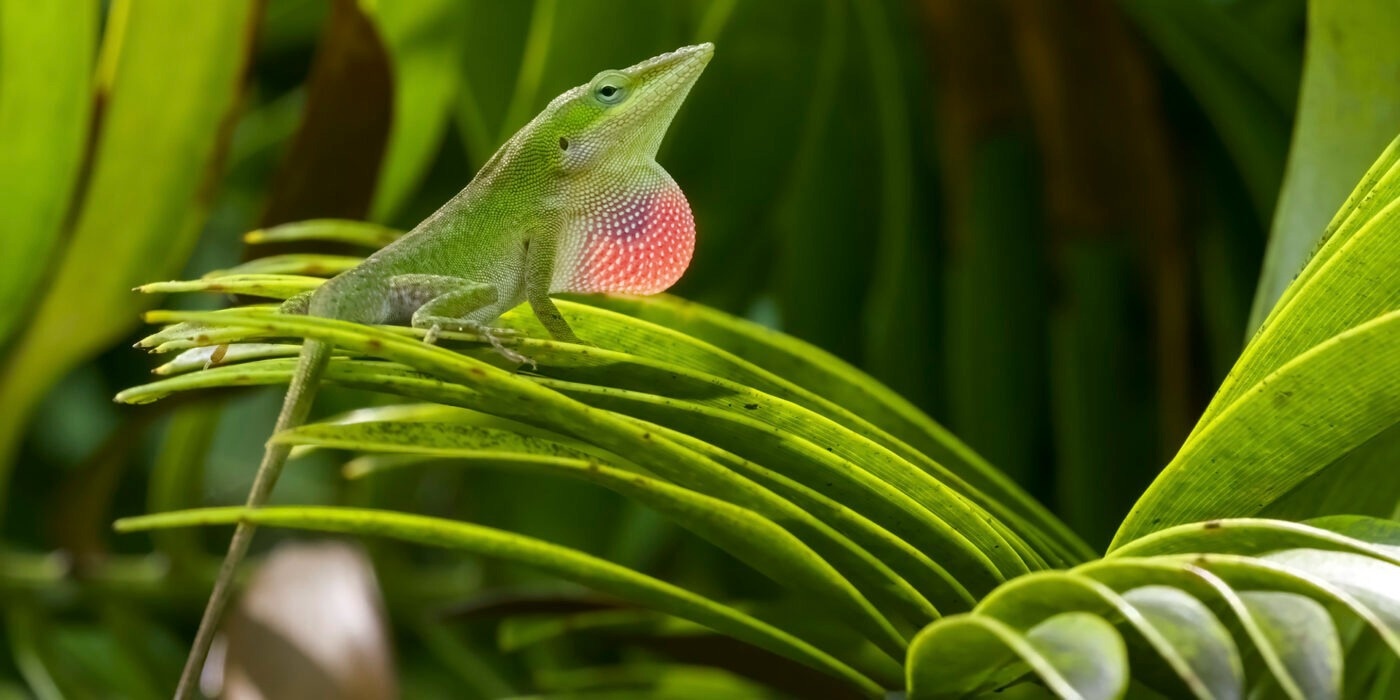Over extended periods, many species do not undergo any major changes. Biologists frequently explain this as natural selection preferring those with more balanced traits.
 New research from Washington University in St. Louis and the Georgia Institute of Technology directly measures the long-term survival of lizards in the wild, providing a more complete explanation of how evolution plays out among species that live side-by-side. Image Credit: Day’s Edge Productions
New research from Washington University in St. Louis and the Georgia Institute of Technology directly measures the long-term survival of lizards in the wild, providing a more complete explanation of how evolution plays out among species that live side-by-side. Image Credit: Day’s Edge Productions
However, a new study from Washington University in St. Louis and the Georgia Institute of Technology gives a more comprehensive explanation of how evolution occurs among species that coexist. The scientists demonstrated that co-existing species each occupy a separate “fitness peak” that is best understood as part of a communitywide “fitness surface” or landscape by directly monitoring the long-term survival of lizards in the wild.
The study, conducted by Georgia Tech’s James Stroud and published in the Proceedings of the National Academy of Sciences, offers a new way of thinking about how species interact across time and how distinctions reinforce their distinctness.
If species are adapted to their environment, and the environment does not change, then you wouldn’t expect the species to change. However, when scientists have gone out and studied natural selection, they rarely find evidence of such stabilizing selection. Given this disconnect, we set out to study natural selection on the organisms we know so well, Anolis lizards, to measure selection over several years and try to understand what is going on.”
Jonathan Losos, William H. Danforth Distinguished University Professor and Professor, Biology in Arts & Sciences, Washington University in St. Louis
Stroud, a postdoctoral researcher at WashU at the time, discovered a location where four distinct anole species coexisted on a small island in a lake at the Fairchild Tropical Botanical Garden near Miami.
On the island, he captured thousands of individual lizards, tagged them, and measured their body sizes. Stroud subsequently captured all of the lizards on the island once more every six months over the following two and a half years, which corresponded to two to three generations of lizards.
The new lizards that appeared were island babies. Stroud could safely conclude that if a lizard vanished from his census records, it had passed away since the nearby lake, which was teeming with fish that would eat them, preventing them from escaping.
The researchers could assess whether survival was correlated with the physical characteristics they had been monitoring, such as leg length, by identifying which lizards persisted from one year to the next.
Losos added, “What is special about this study is that we simultaneously measured natural selection on four co-existing species, something that has rarely been accomplished. By coincidence, just as our paper was published, another group published a similar study on Darwin’s famous finches of the Galapagos Islands.”
Losos and Stroud discovered that the stabilizing type of natural selection, which preserves a species’ similar, average traits, was incredibly rare among the Florida lizards. In actuality, natural selection has changed significantly throughout time. Lizards with longer legs would perform better in certain years, whereas lizards with shorter legs would fare better in other years. There was absolutely no discernible trend for other periods.
The most fascinating result is that natural selection was extremely variable through time. We often saw that selection would completely flip in direction from one year to the next. When combined into a long-term pattern, however, all this variation effectively canceled itself out: species remained remarkably similar across the entire time period.”
James Stroud, Assistant Professor, Georgia Tech
Science still has a lot to learn about how evolution operates in a group. Since it takes so much time and effort, there are not many long-term studies like this one.
Stroud added, “Evolution can and does happen—it is this ongoing process, but it does not necessarily mean things are constantly changing in the long run. Now we know that even if animals appear to be staying the same, evolution is still happening.”